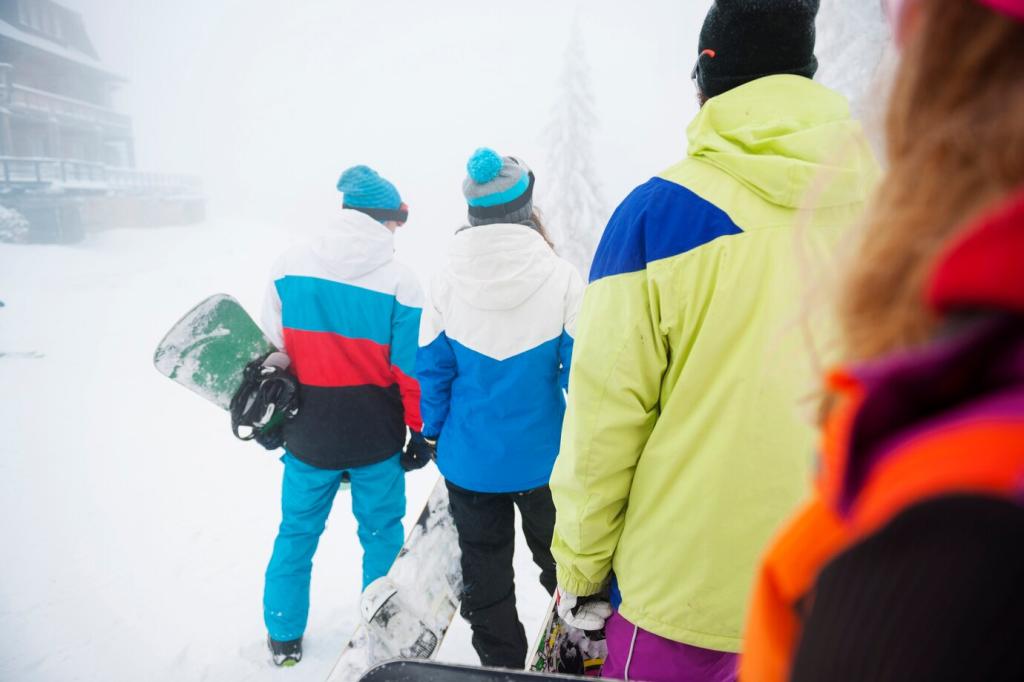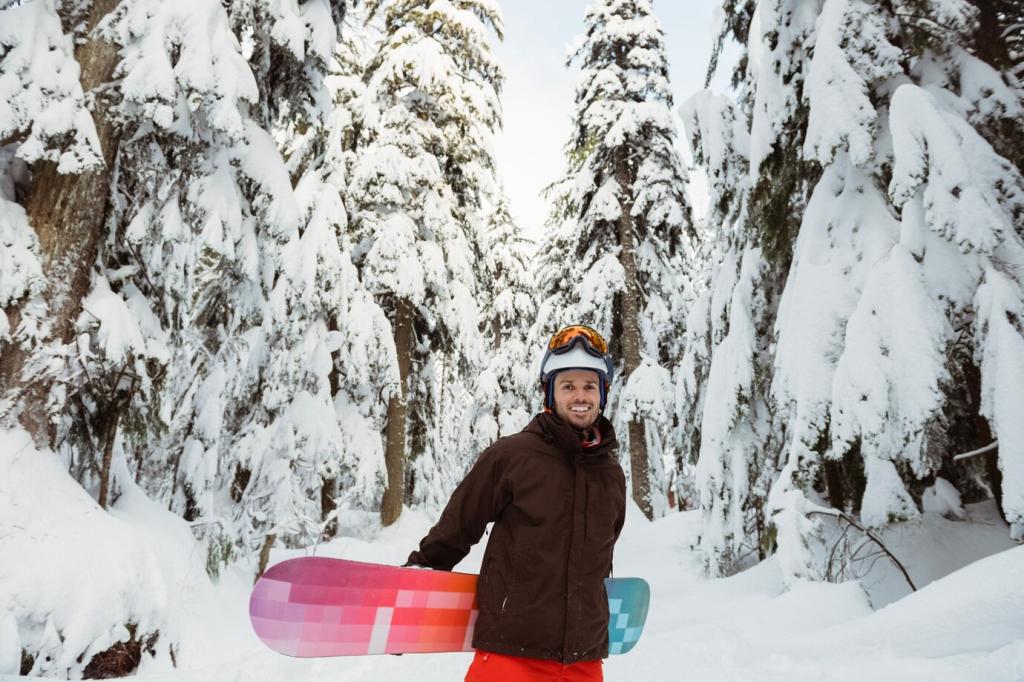Reading the Mountain Map Like a Local
The fall line is the path gravity wants you to take; trails aligned with it feel smoother and more predictable. Sunny aspects often soften earlier, while shaded faces stay firm longer. Use this knowledge to time your runs, choosing slopes that match the day’s evolving snow conditions and your confidence.
Reading the Mountain Map Like a Local
Cat tracks connect big terrain but can stall riders who scrub too much speed. Keep momentum, glance uphill at crossings, and never stop blind on narrow sections. If you’re new, ask patrol or ambassadors about flatter connectors to avoid long skate-outs. Comment with the cat track that always gets you home fast.





